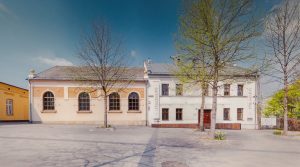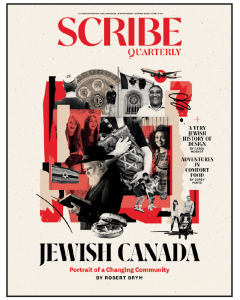HAMILTON — It was difficult for Emmy Weisz to watch the documentary on Anne Frank.
As a child in Amsterdam, just one year younger than Frank, Weisz had walked the same streets, stepped inside the same buildings as the famed diarist.
But Weisz attended the opening of Anne Frank: A History for Today because she knows it is important to share these stories and educate the community.
The official opening, presented in partnership with Temple Anshe Sholom and the Canada Netherlands Friendship Association, took place Nov. 18.
Anne Frank: A History for Today is one of two travelling exhibitions brought to Hamilton’s Temple Anshe Sholom by the Hamilton Jewish Federation Holocaust Education Committee.
Anne Frank: A History for Today juxtaposes the Frank family’s story against world events before, during and after the rise to power of Adolf Hitler and the Nazi party. The exhibit includes photographs of the Frank family and the other occupants of the secret annex.
Making its Canadian première, Dutch Resistance Art and Official Propaganda, about the period from 1940 to 1945, conveys the Nazi oppression of Holland and its citizens during the occupation.
The exhibit is based on three collections from the archives of the Anne Frank Center in New York City, with original propaganda posters distributed by the Nazi-controlled Dutch government; linoleum and woodcut prints by Marie de Zaaijer, and original drawings by Dutch artist Henri Pieck.
The exhibits are on display until Friday, Nov. 30.
Dignitaries who spoke at the opening ceremony included Hamilton Jewish Federation president Larry Szpirglas, the temple’s Rabbi Jordan Cohen, the honorary consul for the Netherlands, Richard ter Vrugt, MP David Sweet, Hamilton Mayor Bob Bratina, MPP Ted McMeekin and Mario Silva, incoming Canadian chair, Task Force for International Co-operation on Holocaust Education, Remembrance and Research.
Szpirglas expressed hope that these exhibits will serve as springboards for discussions about respect, inclusion and social cohesion, as well as conversations about bullying, racism and prejudice.
Sweet, who along with Silva received a humanitarian award from the committee, called the exhibit an “important and meaningful educational initiative.”
He said he’s sometimes asked, “Why people don’t just move on?” in regard to the Holocaust.
“Any people who have suffered near total annihilation should be assured that for eternity their loss will be remembered,” he said.
The opening ceremony also included students from Waterdown District High School and St. Jean de Brebeuf Catholic High School speaking about the exhibits, which were housed at the schools for one month before moving to the temple. Students were trained as docents, and hundreds of community members and students toured the exhibits.
Weisz, 82, was a hidden child in Holland. Her father was killed, as were 42 of her close relatives. Her two step-siblings were also hidden. Her mom survived by lying about being Jewish.
In May 1943, Weisz escaped on her own into hiding. She estimates she hid in 36 different places, having to flee many times after being betrayed. She was often in one room by herself with just one book to keep her company.
“I read Ben Hur so many times,” she said while touring the exhibit. “Often there was a Bible. I became quite the expert in the New Testament.”
Once, one of the daughters living in a home where she was hiding was dating a police officer. He warned the family that police would be coming around that evening. That night, Weisz spent hours hiding in a ditch on top of a mountain and watched many children being taken away.
She remembers how she felt when she was liberated in April 1945. “I was so sure cruelty like that would never happen again,” she said. “But of course, it has.”
Weisz married her husband, Erich, in Holland, and they moved to Canada in 1954. They had two children. After living in Vancouver, Toronto and Barrie, they settled in Hamilton in 1961.






